Steps to host an application on the cloud
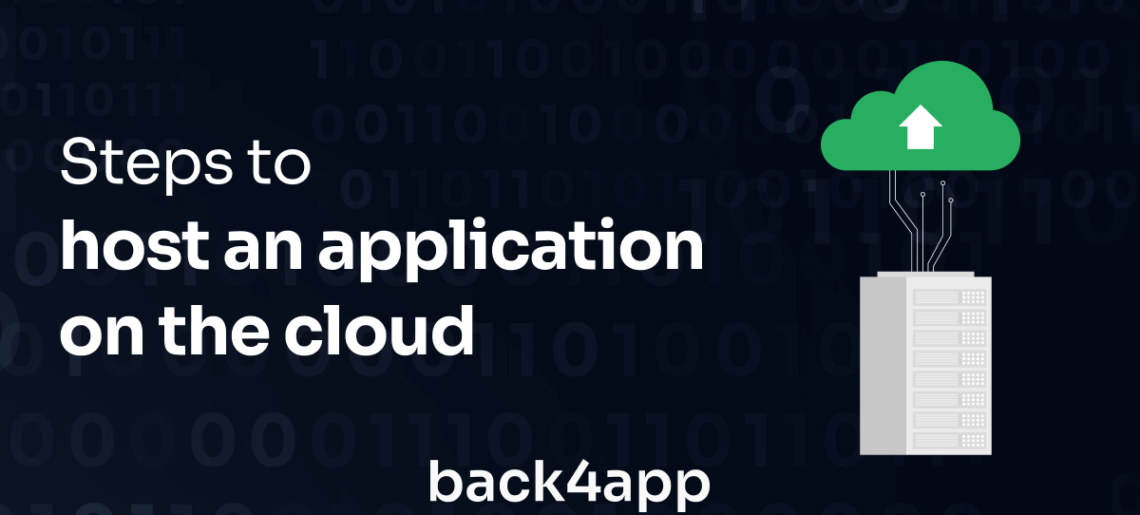
Are you looking to deploy your app on the cloud? If so, you’re not alone. Many businesses are turning to the cloud to deploy apps because of its many benefits. However, navigating the world of cloud deployment can be confusing, especially for those who are new to it.
That’s why we’ve put together this guide to help you understand cloud deployment and to go about it using some of the top cloud solution vendors.. We’ll cover the different cloud deployment models, their advantages and limitations, and the steps you need to take to deploy your app on the cloud.
By the end of this article, you’ll have a better understanding of cloud deployment and be equipped with the knowledge you need to deploy your application with confidence. So let’s get started!
Contents
- 1 An Overview of Cloud Deployment
- 2 The Advantages of Deploying Apps on the Cloud
- 3 Cloud Deployment Solution Drawbacks
- 4 The Procedure for Deploying Apps on the Cloud
- 5 Types of Cloud Computing App Deployment
- 6 Procedure for Deploying Applications to the Cloud?
- 7 Back4App
- 8 Heroku
- 9 Firebase
- 10 AWS
- 11 Conclusion
- 12 Frequently Asked Questions
- 13 Overview of Cloud Deployments
- 14 List the Advantages of Cloud Deployment
- 15 List the Top Cloud Service Providers?
An Overview of Cloud Deployment
Cloud deployment allows for the use of cloud technologies like IaaS, SaaS, and, PaaS to act as keys that allows users to access data.
Since cloud computing solutions are established in the cloud, they provide a simple solution for developers to deploy apps through any of the options.
Additionally, before the end product’s final launch, cloud deployment provides the resources required to install and configure tools required to deploy apps..
The Advantages of Deploying Apps on the Cloud
This article categorizes the advantages of cloud deployment into two main sections: business advantages as well as the technical benefits.
The Business-Related Advantages
There are several benefits that cloud deployment can offer businesses, with some of the most significant being:
Saves Money
The option of deploying apps on the cloud is widely recognized for its cost-saving benefits. By using cloud deployment models, businesses can significantly reduce their infrastructure expenses. One of the major advantages of cloud deployment is that businesses no longer need to invest in expensive machines and other infrastructure required on-site, thus eliminating the expenditure.
This also helps reduce the expenses associated with licensing, regular hardware upgrades, cost of energy.
Additionally, businesses that rely on on-premises infrastructure often require a larger teams or technical consultants to manage their systems. However, by using cloud solutions, companies can reduce their reliance on staff and lower their associated costs. Furthermore, cloud deployment can help organizations decrease spending, which is an added benefit for businesses seeking to reduce costs.
Enhances Business Continuity
One of the key advantages of using cloud deployment models is that businesses can maintain their operational resiliency in various situations. Unlike traditional on-site deployment option, cloud services guarantee that continuous operations are not interrupted is case of data disaster or network downtime.
Therefore, businesses that choose cloud deployment models can remain resilient and continue operating without disruption. This level of resilience is a major competitive advantage over those who rely on on-premises deployment models that may experience significant downtime during disruptions.
Competitive Advantage
Cloud deployment provides businesses with a faster application deployment process as compared to the traditional option Additionally, this advantage of deploying apps on the cloud can also accelerate app development procedure. By the same token, quick deployment and a shorter development timeline of an application give businesses a competitive advantage over their competitors.
Increase Scalability
Cloud providers offer different types of scalability to businesses, including horizontal and vertical scaling, as well as autoscaling, which dynamically adjusts resources based on application demand. This flexibility enables enterprises to adapt to changing user demands and scale their resources up or down accordingly.
Enhances Efficiency
Cloud app deployment options offer a more productive and efficient way to handle infrastructure. They require less physical space, and cloud service providers gives app users the option of enhancing app efficiency through feedback and self-service options. These functions enhance business productivity but also offer businesses more flexibility and control over their applications.
Technical-Related Advantages
Below are the technical-related advantages of cloud-based app deployment.
Fast and Hassle-Free Deployments
Deploying an application on the cloud is a seamless process. It allows developers build apps that are assessable on the internet. The deployment procedure can be very fast, but the actual time varies depending on the app requirements, the cloud service provider you choose and the type of cloud deployment you preferred.
Advanced Control Functions
While on-premises deployment offers greater control over local infrastructure, cloud-based app deployment gives developers significant control over to manipulate computing resources as will.
The team coordinator may choose also assign various permissions to team members based on their roles. Additionally, with cloud deployment, access to cloud platforms is not restricted to the office; deployment can be performed from any location worldwide.
Increases Security
Companies that offer cloud services help alleviate the security burden required to build an app. This is because many cloud platforms handles the task of securing data and ensuring application safety. Moreover, in the event of hardware failure, data loss, or other mishap, data can be recovered quickly because CSPs rely on multiple data centers and servers instead of a single one.
Predictable Cost and Resource Requirement
Cloud deployment offers the benefit of measured service, which means that businesses can estimate their costs and the resources needed to complete a project with ease. Cloud service providers (CSPs) often provide online tools like cloud calculators, which can help businesses calculate their expenses and configure their resources without hassles.
Additionally, pay-as-you-go billing options are available, which allow users to pay for only what they use. This measured service approach is a compelling advantage that make cloud deployment preferable to other conventional application deployment methods.
Technical Support
Cloud deployment offers 24/7 customer support, which is a valuable advantage for businesses. While cloud service providers make every effort to avoid errors, application crashes, and glitches, users may still encounter problems. In such cases, customer service is available to provide assistance. However, the level of customer support may differ depending on the type of plan, whether it is freemium or paid.
Cloud Deployment Solution Drawbacks
There are also drawbacks to cloud deployment solutions. The major ones are discussed below:
Privacy and Security Issues
Cloud deployment faces critical challenges with security and data privacy at the forefront. While top-tier cloud service providers adhere to international data privacy and security regulations, there is still reservations in leaving your data at the mercy of a third-party.
One of the main issues while using cloud service vendors are data theft, interfaces malfunctions, and, API issues.. It is crucial to address and mitigate these concerns to ensure secure cloud deployment.
The Skill Gap
It can be challenging to put together a team with the required experience to deploy cloud apps.. Cloud computing is still a relatively new field compared to traditional deployment methods, and as a result, finding developers with the necessary experience to deploy apps using various cloud models can be difficult.
Lock-In by Vendors
Lock-in with a cloud service provider is a major challenge for businesses that adopt cloud deployment. Vendors of cloud services tend to limit their clients’ flexibility, with Firebase being a prominent example of this.
This restraint also obliges businesses to continue using the service of a cloud platform even when the provider increases prices or terminates free plan option. As a result, the lack of choice and freedom of movement can be a significant disadvantage for businesses that rely heavily on cloud services.
Infrastructure Control Limitations
While one of the advantages of cloud-based app deployment is that they are responsible for infrastructure, it may be considered a disadvantage as far as control is concerned. In fact, companies have little or no control over server hardware and other critical infrastructure.
This lack of control can result in limited customization and flexibility, as well as potential service disruptions or outages that are outside of the business’s control.
The Procedure for Deploying Apps on the Cloud
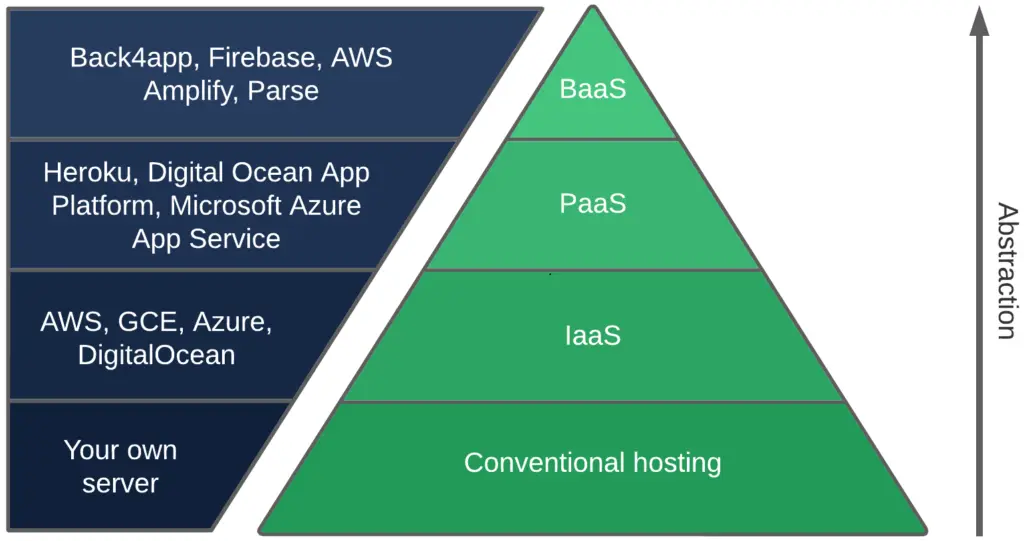
Before delving into cloud app deployments, let’s discuss the major cloud computing models in the world today.
Infrastructure as a Service (IaaS)
Infrastructure as a Service (IaaS) offers businesses access to security resources, computing power, network infrastructure, server, storage, and lots more. This model enables companies to deploy their applications on rented servers that are installed globally.
One of the key benefits of IaaS is its cost-effectiveness. It allows businesses to avoid investing in expensive hardware and instead rent the necessary resources from cloud providers.
Additionally, IaaS provides real-time insights into the performance of applications, which is beneficial for businesses that need to quickly respond to changes in demand.
Another advantage is that IaaS enhances business resilience with up-to-date hardware and reduces capital expenses. There are several top IaaS service providers, including DigitalOcean , IBM Cloud, Linode, Azure, and AWS.
Platform as a Service – PaaS
Providing users with a comprehensive environment for deploying and creating cloud-based applications, Platform as a Service is a widely used cloud solution for app deployment.
This model offers not only computing, servers, storage resources, and network infrastructure but also database management services, middleware, and operating systems.
The advantages of PaaS are many, including reducing the time spent on coding by providing helpful tools, which makes it cost-efficient. Furthermore, PaaS saves time that developers would have spent on infrastructure maintenance and putting the required stack together.
Leading PaaS providers include OpenShift, Engine Yard, Dokku, Heroku, Elastic Beanstalk and AWS.
Backend as a Service – BaaS
Backend as a Service (BaaS) offers developers the opportunity to outsource support for handling server-related operations so developers can focus on frontend development.
BaaS platforms allow businesses to focus on developing the client-side of apps while the service provider handles authentication, hosting, database management, cloud storage, and other server-side tasks.
This computing model gives developers and enterprises an advantage over their competitors with rapid development, low cost, and reduced development timeline.
Building apps that works across multiple platforms and the need for fewer backend developers are also benefits of using BaaS development model. Parse Kuzzle, 8Base and Back4App are reliable and popular BaaS vendors in the market.
Software as a Service – SaaS
Software as a Service is a versatile solution for building cloud applications. Unlike other cloud computing models, SaaS combines all IaaS and PaaS resources with the additional service of app hosting.
Moreover, users can choose to pay for the software as they go, instead of purchasing it outright. With SaaS platforms, businesses don’t have to worry about installing, running, or updating any software, servers , or middleware resources.
This model also offers benefits such as remote work, universal data access, and scalability. Leading SaaS providers include Zoho, Salesforce, Dropbox, and Slack, among others.
Types of Cloud Computing App Deployment
Public Cloud
Public cloud deployment offer a cost-effective solution for businesses to access cloud resources and services. The best part is, businesses don’t need to make an upfront investment, and they can choose that charges on user basis.
This model is suitable for companies that are looking for a free plan or pay only for the resources they use. Moreover, with the public cloud, users don’t have to worry about hardware or infrastructure setup, which saves time and effort.
However, public clouds are not considered as secure as private clouds. Businesses that do not mind the security risk can use public cloud without bothering abut the shortfalls. The public cloud is suitable for companies that prioritize flexibility, cost savings, and scalability over security.
Some popular public clouds are Microsoft Azure , Oracle Cloud, and Google App Engine.
Private Cloud
In the cloud computing world, private cloud deployment models are reserved for a single company. Unlike public cloud models, in which users share hardware resources, private clouds provide more control over all cloud resources such as servers and network infrastructure. This control, coupled with the ability to address data security concerns, makes private clouds an attractive alternative for companies that can afford it.
However, this model requires a larger maintenance costs and scaling the infrastructure can also be challenging to handle. Additionally, the need for IT teams of client companies to manage and maintain the systems increases the cost and responsibility for businesses.
Examples of private cloud models include HPE Helion, Oracle Private Cloud, Virtual AWS Private Cloud (VPC), and Dell EMC.
Community Cloud
A community cloud serves a set of organizations with similar goals and objectives. This deployment model is usually built and managed by the organizations themselves or through a dedicated professional service. It is a cost-efficient, scalable, and highly secure solution for businesses and communities with shared infrastructure needs.
Community clouds are widely used by government institutions, trading companies, and banks as a viable means of establishing functional cloud infrastructures.. The advantages of using a community cloud model include cost-effectiveness, the ability to leverage shared resources, and a high level of security.
Since these clouds are designed for specific communities, they can provide customized services and better address the unique needs of each organization
On-Premises
On-premises approach to cloud deployment provides businesses with the flexibility to acquire, install and configure their hardware, software, and other resources in-house.
Unlike cloud models, the IT team of organization handles all the engineering assignments required to get the system up and running, as well as ongoing management.
On-premises deployment method offers absolute control over the machines, servers, data, and security-related issues .
On the other hand, the cost of setting up the infrastructure and ongoing maintenance could be a hindrance for small and medium-sized businesses.
Hybrid Cloud
The hybrid cloud model offers a unique approach to cloud deployment that combines multiple resources and environments, including on-premise, private, and public models . This enables users to choose the best resources from different cloud deployment models that meet their specific needs.
Flexibility in one of the biggest benefits of a hybrid cloud approach. This deployment model allows businesses to combine the benefits of different cloud deployment models, such as cost savings and data control, into a single, seamless solution.
Moreover, hybrid cloud deployment enables businesses to better manage their resources and applications, as they have the ability to seamlessly customize and optimize their applications with the help of different cloud services.
Some of the leading hybrid cloud service providers in the market include NetApp, Microsoft Azure, , Amazon Web Services and Google Cloud, among others.
Procedure for Deploying Applications to the Cloud?
Next we shall make an overview of the step-by-step procedure for deploying an app through four of the top cloud service providers.
Back4App
Back4App offers businesses a BaaS, a cloud computing model discussed earlier in this article. It stands out with its ability to handle over three and a half billion monthly processed requests, making it an excellent choice for deploying the backend for high-performance applications.
To get your app up and running with Back4App, you first need to sign up, which is a straightforward process. Simply browse to the Back4App website and navigate to the ‘Signup’ feature. What’s great is that Back4App doesn’t demand a payment details for registration, simply sign up using your Google or GitHub accounts, or you can create an account using your email address.
After signing up, be sure to check your email for a validation link to complete the signup process.
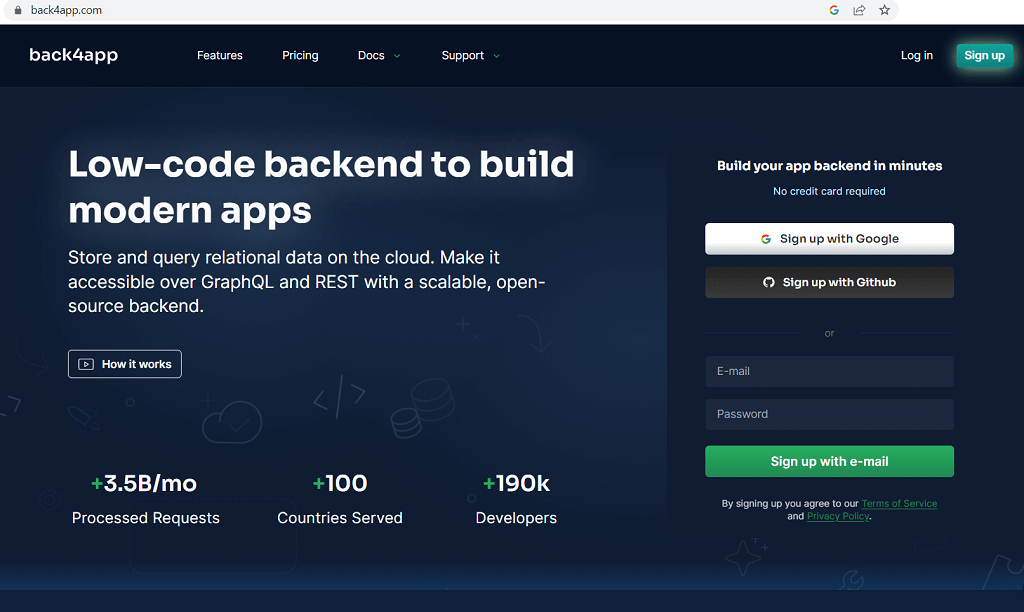
Once you have successfully signed up, you will land on the ‘My Apps’ page. From there, click on the ‘Build new app’, the platform will request certain information to help elevate your user experience.. You can choose to skip these or answer them appropriately, depending on your preferences. Once you’re done, input your app’s name and click on the ‘create’ button to get started.
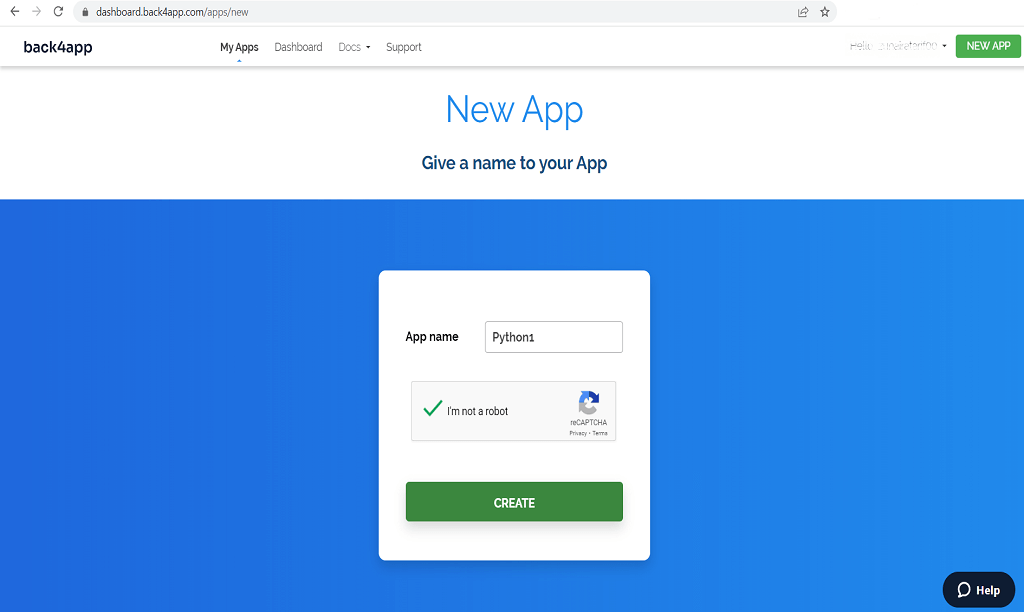
You will then be taken to the ‘My Apps’ page, where you can see several options available. We will discuss each of these options step by step, to help you navigate through the platform with ease.
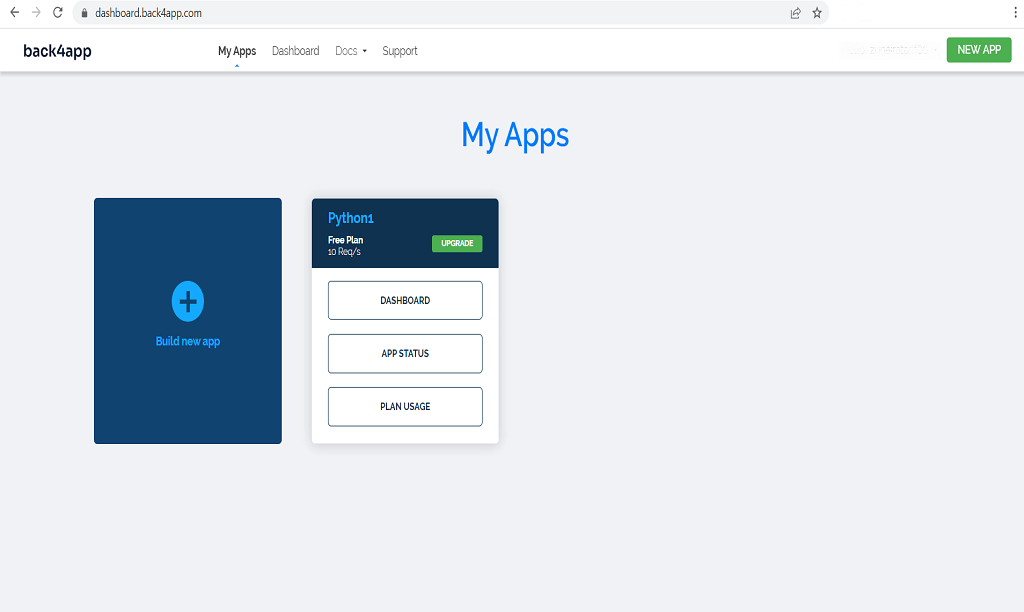
Database Browser
Back4App prides itself on its powerful support of Parse and its use of NoSQL databases. Within the Back4App platform, the Database Browser offers developers an easy-to-use interface to create, modify, and delete data classes and objects.

To create a new data class, users can simply navigate to the “Database” category in their app dashboard and select “Create a Class”. From there, they can easily assign a name, choose a data type, and select a privacy mode for the class. Once created, they can add rows and columns to the class with just a few clicks.
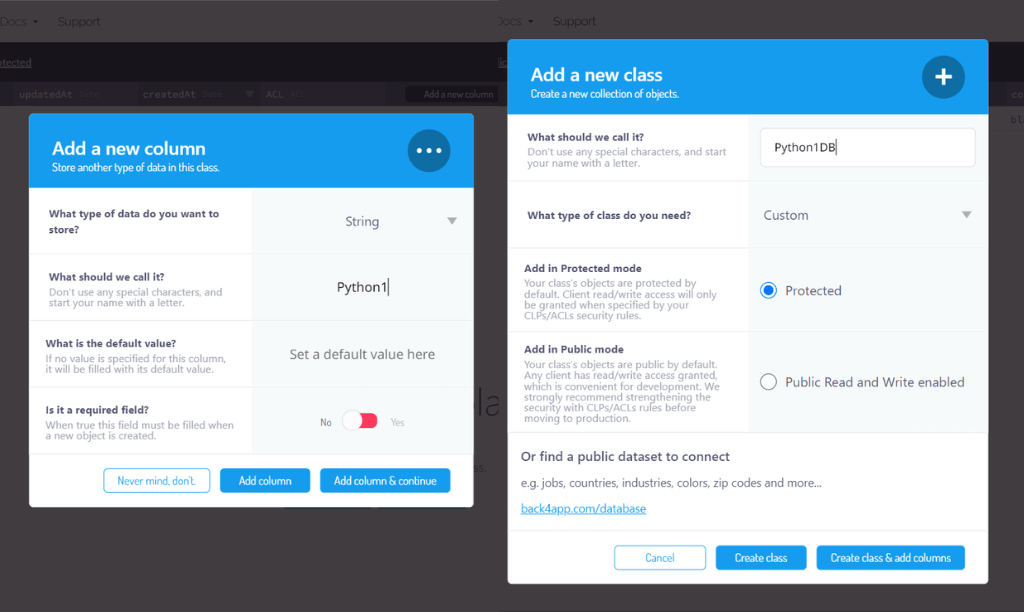
Back4App also offers the option to import cl]data through JSON or CSV files, making it easy to populate data in bulk. The Database Browser that looks like a spreadsheet empowers you to change rows and columns at any time. They can even import binary attachments into columns, such as images or PDF files, to further enhance their app’s functionality.

Database HUB
Using Back4App’s Database HUB is an efficient way to access public datasets for your cloud-deployed applications. With over 800 results available, you have the option to search for the required dataset manually or by using the ‘search databases’ option.
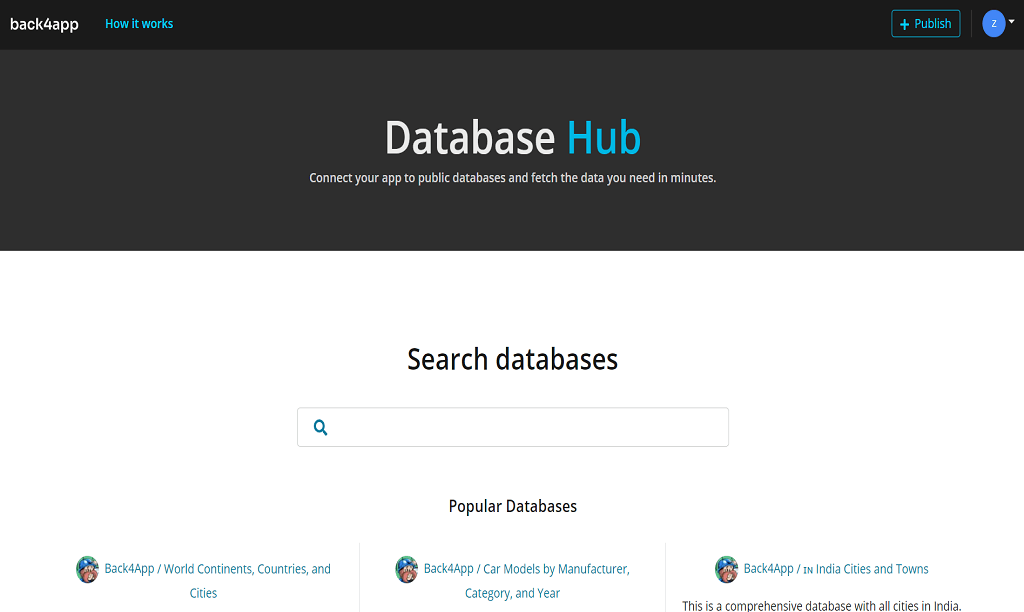
Additionally, Back4App also offers free datasets that you can easily integrate with your app. You just need to select the dataset you need, connect it to your app using the ‘connect to API’ button, and choose ‘Fetch Data’.
Finally, select the right platform that aligns with your app’s framework or language, and the selected dataset will appear on your dashboard. This seamless process saves time and allows you to quickly utilize the dataset in your cloud application.
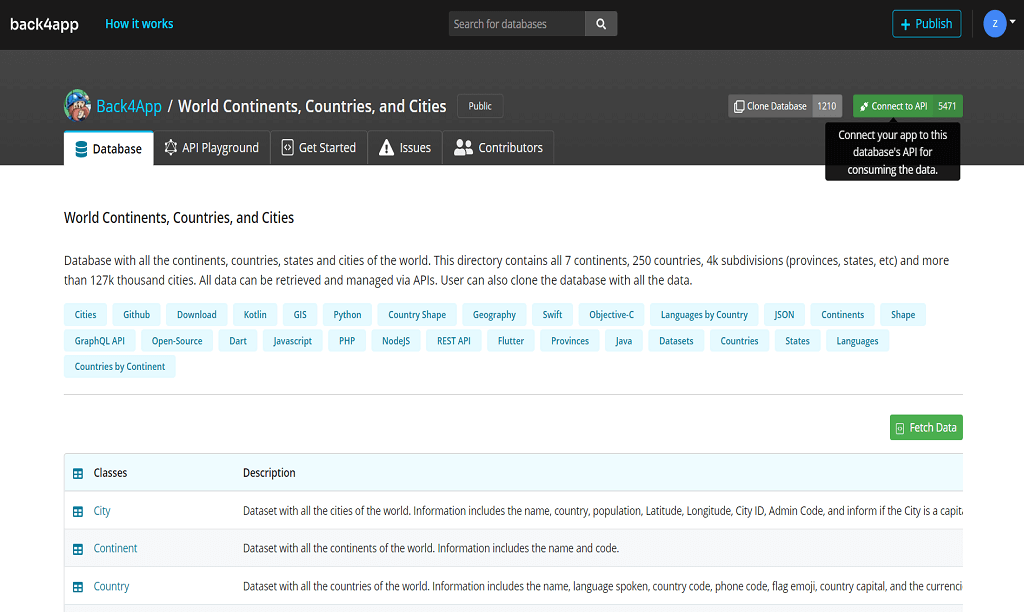
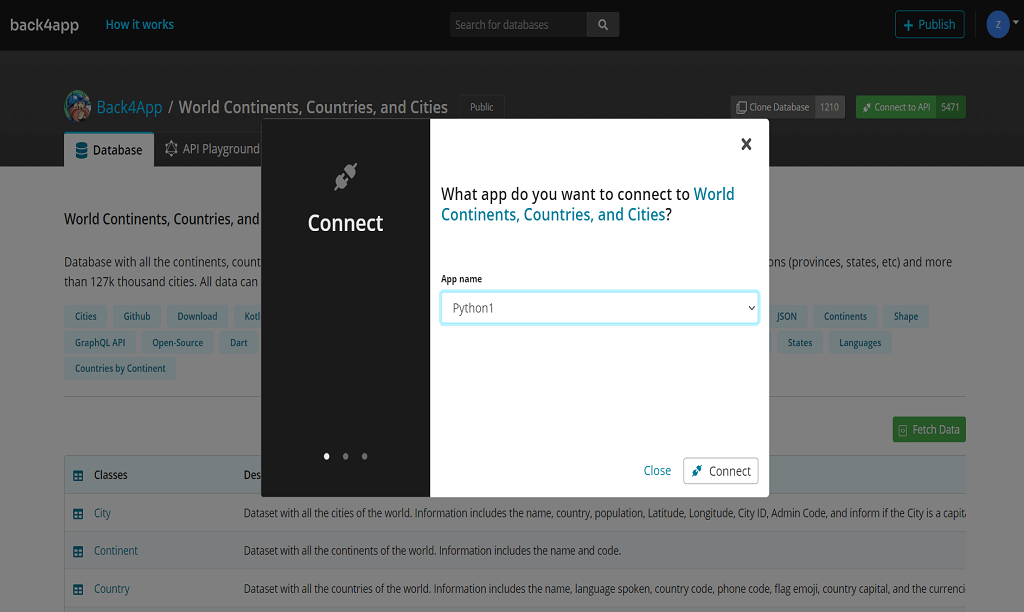
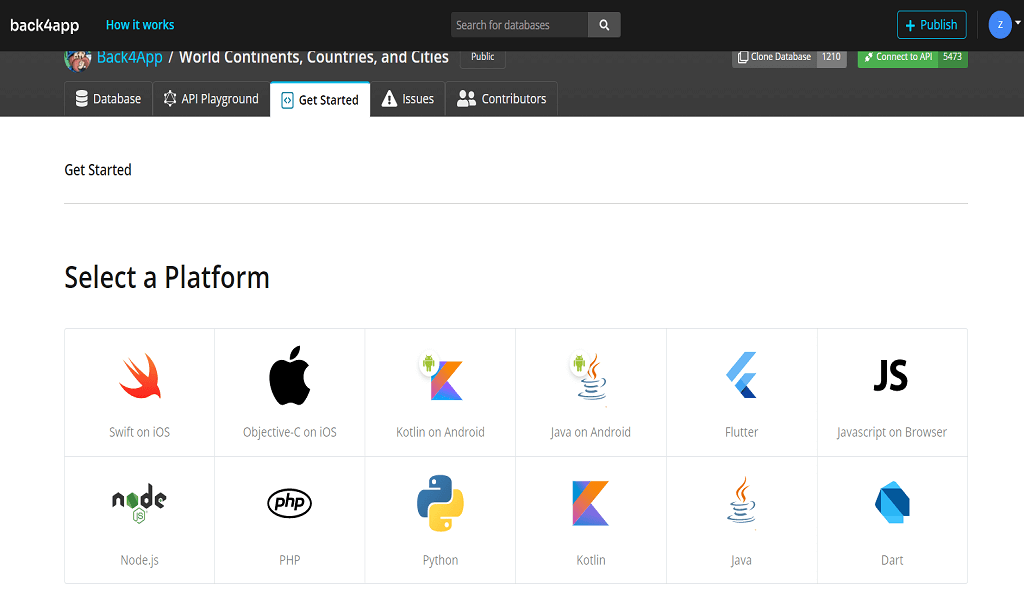
Authorization
In addition to its other features, Back4App also offers robust authorization capabilities to enhance the security of deploying cloud-based apps. Back4App leverages the power of Parse Server, which provides offers two control option to manage access to data.
These are, object-level access control and class-level permissions (CLP). You can set permissions at the table level, as well as for individual rows when you choose CLP. You can also assign various levels of permission to team members based on their job responsibilities.
On the other hand, access control lists (ACLs) help to keep your data secure by preventing unauthorized access by the public.

Blockchain Storage
It is worth noting that the use of blockchain technology can significantly enhance data security, transparency, and traceability. Back4App’s Blockchain Storage feature allows users to store data in a decentralized and tamper-proof manner, adding an extra layer of protection against unauthorized access or modification.
To utilize Back4App’s Blockchain Storage, the first step is to open the Blockchain tab and select a class from your app’s database. After that, you can easily add the chosen group to blockchain by providing your approval. Back4App also offers free private Ethereum tools, allowing users to leverage the benefits of blockchain without incurring additional costs.
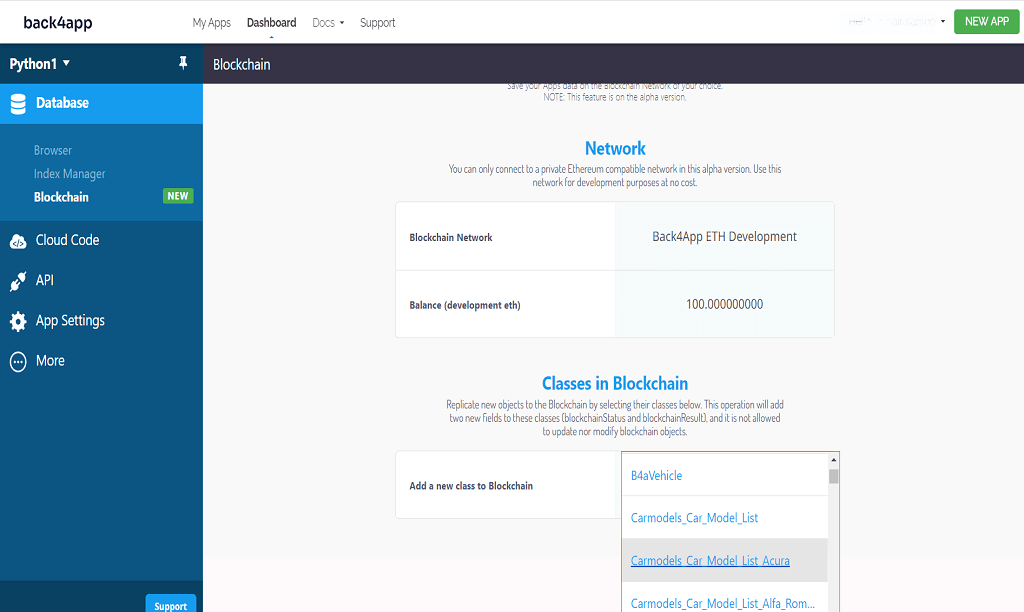
Cloud Code Functions
Cloud Code is a powerful feature of Back4App that allows users to deploy and run JavaScript-powered backend functions easily. With Cloud Code, users can install their JS scripts on Back4App’s servers and run them on the platform’s managed environment. This functions powers connections, triggers, and request validators.
To access the Cloud Code feature, users can go to the dashboard and select the Cloud Code category, where they will find two options which are the Cloud and Public. Selecting the “Cloud” option and then “main.js” will enable users to upload their JS script or write a new one in the main.js file.

Once the script is written, users can easily deploy their changes with the click of a button. Cloud Code supports not only JS, but also PHP, Unity, , Flutter, Android and iOS projects.
Other useful features available under Cloud Code include Cloud Jobs, which is perfect for powering long-running scripts or processing batch tasks, and Server Logs, which can notify developers about console.error(), logging errors, , general logs and console.log().

App Settings
The App Settings category in Back4App provides much more than general settings; it offers app keys that can be accessed with the app ID.
These keys include the App Keys, Webhook Key, Master Key, File Key, REST API Key, Net Key, JavaScript Key, Client Key, and are a critical element for cloud deployment as they ensure a secure and private app ecosystem
The Server Settings section, found in App Settings, is another vital aspect of cloud deployment. Back4App offers an easy to use interface to choose your app settings.
Features include setting options like Live Query, Command Line Tools, and Custom Parse Options. With these tools, developers can customize and enhance the performance of their app in the cloud.
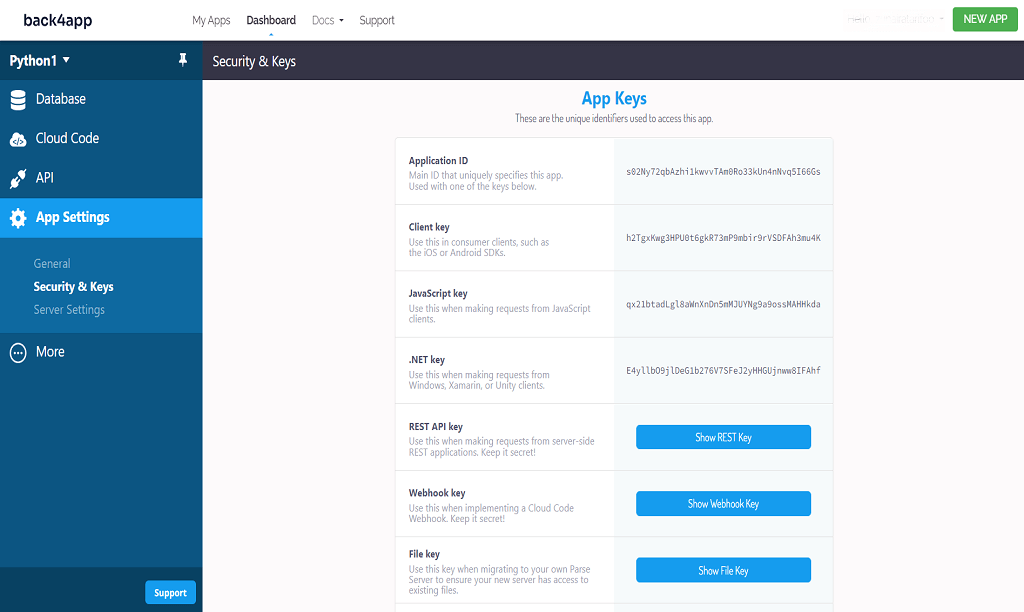
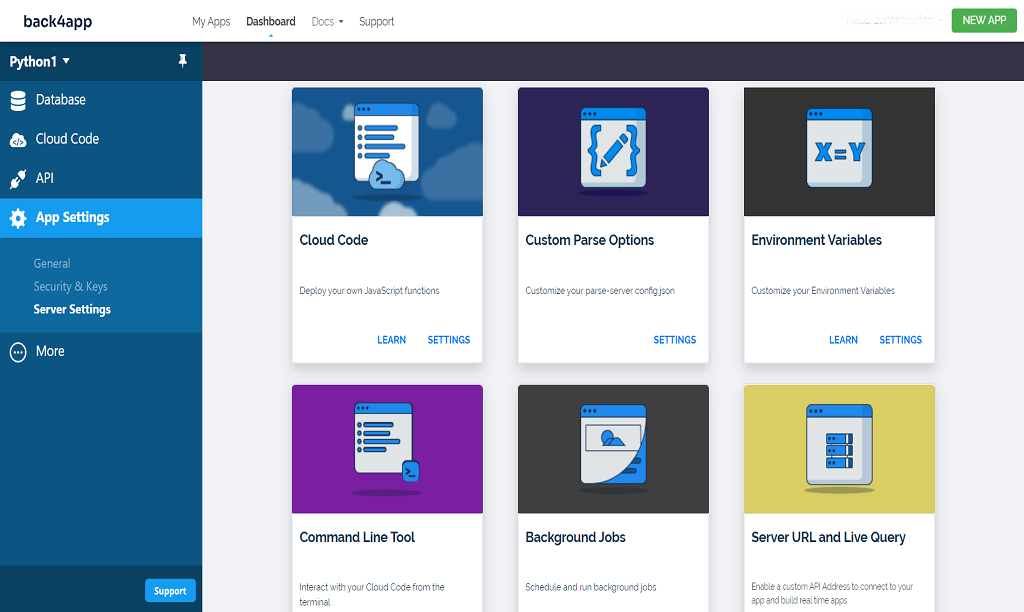
SDK & API Support
Back4App provides ample support for establishing a connection between an application and its servers. Developers can leverage the advantages of the GraphQL API, REST API, and Parse SDK depending on the project’s requirements.
App Status
App Status is an essential feature of Back4App that allows users to monitor their application’s health and performance sttus. By accessing this option with the app key and ID, developers can get insights on log issues, security, server errors, health status and the app’s response time.
Similarly, Back4App provides SDK and API support to connect an application with its servers. Depending on the nature of the project, developers can benefit from Parse SDK or REST and GraphQL APIs. This feature ensures that the application operates smoothly and data is accessible.
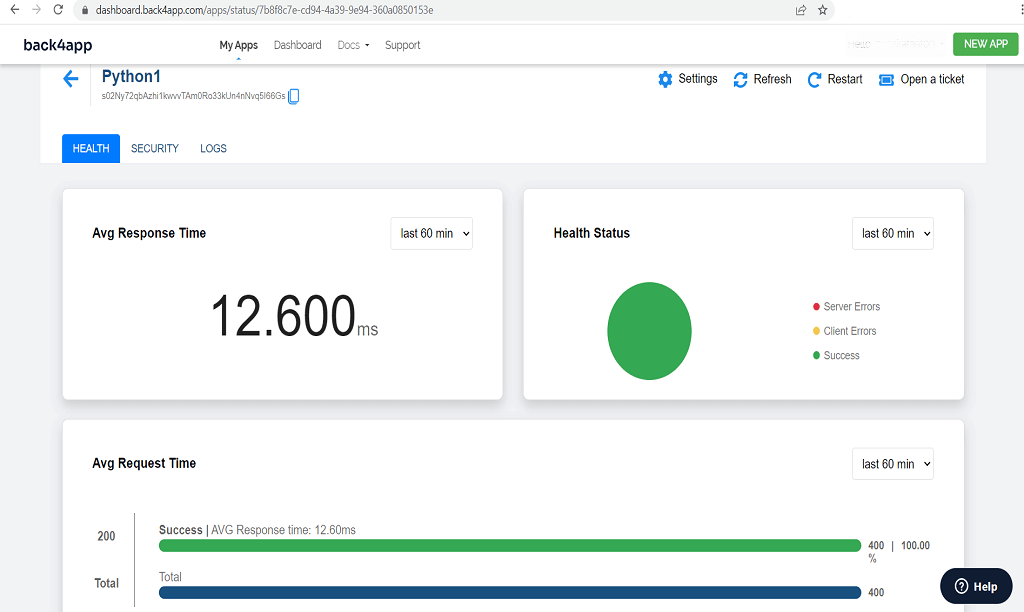
Heroku
Heroku, a popular (PaaS) company, is renowned for its container-based cloud services. Deploying an app on Heroku is an easy process that can be completed in a few simple steps.
The first step is to create a free account with Heroku and verify your email address to access the platform’s Dashboard. From there, you can click] “create new app” button and select the appropriate programming language.
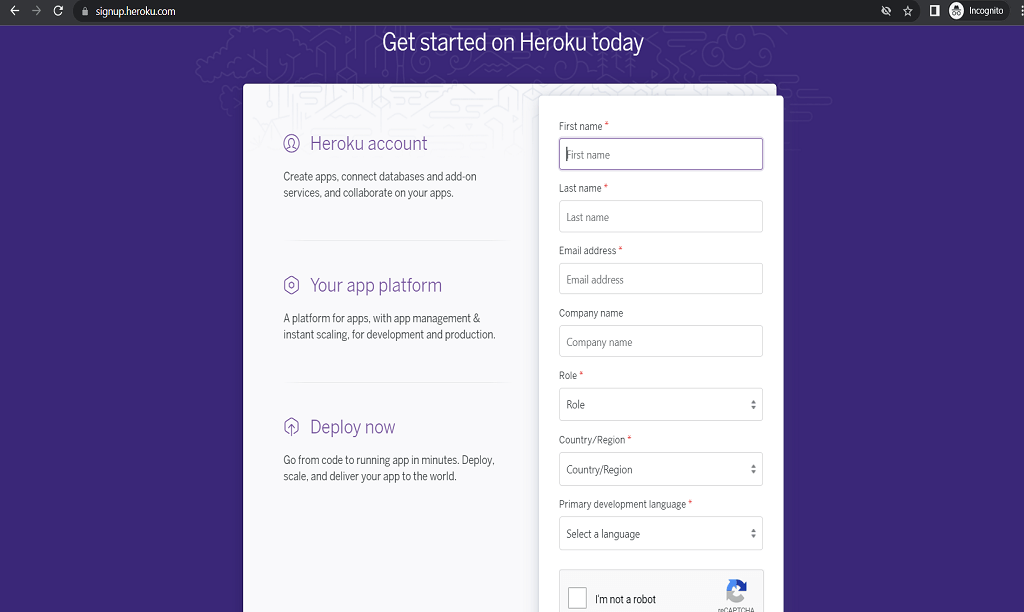
Then, you can set a name for your app and choose the appropriate region to continue the deployment process.
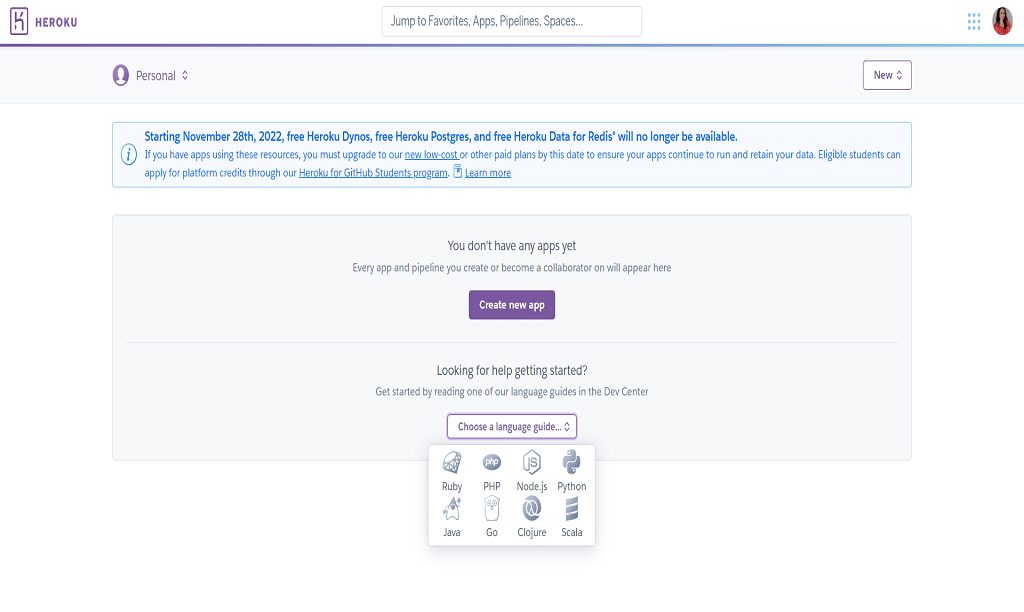
Modes of Deployment
Once you’re ready to deploy your app on Heroku, navigate to the deployment page where you can choose from three different ways to create Heroku app. These options are the primary methods available for deploying your app on this PaaS platform.

Heroku Git
The Heroku Git deployment option needs you to install the Heroku CLI first. It is a simple download for your operating system.
The CLI is a critical tool that helps developers set up, build, and manage their app on Heroku. With the CLI, you can create a Git repository and commence the deployment after making your commits.
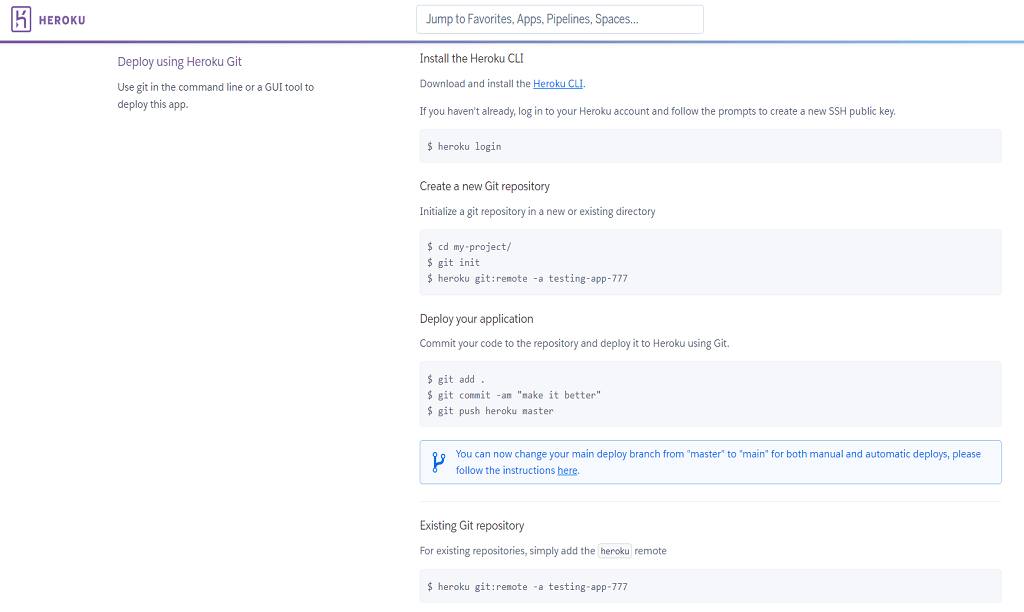

GitHub
To deploy an app on Heroku using the GitHub integration, you need to first link your Heroku account with your GitHub account.
After that, select the app that you want to deploy and choose the “Deploy” option. Then, select the GitHub option, which will lead you to select the repository and branch of the app that you want to deploy.
Finally, you can choose to enable automatic deployments or make manual deployments by selecting the “Deploy Branch” button.
With automatic deployments, all changes pushed to the selected branch will be automatically deployed, while with manual deployments, you have to manually select the branch that you want to deploy.

Container Registry
Heroku’s Container Registry is a cloud deployment option that is specifically designed for Docker-oriented applications.
Although it still requires the use of the Heroku CLI, the Container Registry provides developers with a simple and efficient way to deploy Docker images to the cloud.
It also offers the added benefits such as runtime support and private spaces, making it an excellent choice for those who want to deploy containerized applications with ease.
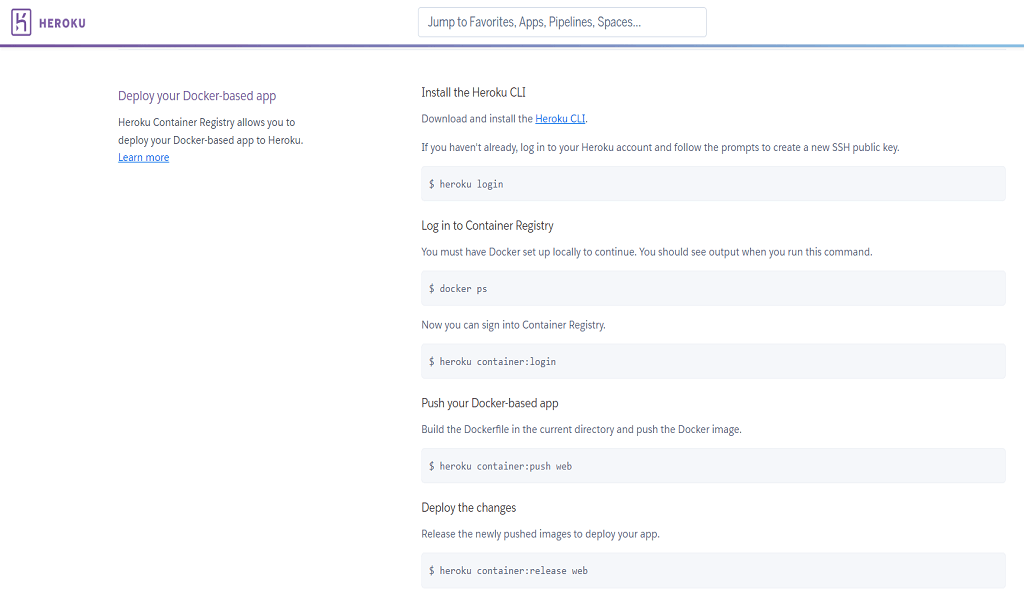
Firebase
This is a well-known cloud deployment provider for apps that run on the web as well as mobile devices. Similar to other cloud deployment platforms like Heroku and Back4App, creating an account in Firebase is free of charge, and the process of signing up is simple with just a click on the ‘Get Started’ button.
Upon signing up, users can access Firebase Console to start deploying their apps on the cloud by creating a new project. After naming the project and accepting the legal terms, Firebase offers various free tools such as user segmentation, A/B testing, analytics, and more, which can be enabled for the app.
Once these initial steps are completed, users can view the Firebase dashboard for performing cloud deployments.
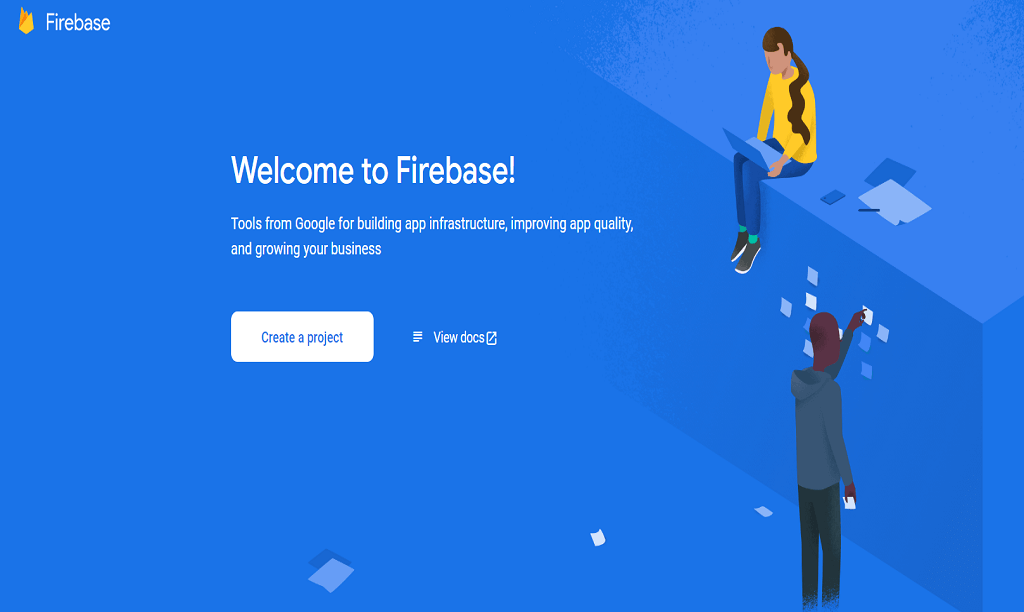
App Registration
Firebase provides a quick app registration process. First, the developer can select the type of app to make, such as Unity, Flutter, iOS. Android, or Web apps. After that, name the app, then proceed to access Firebase’s hosting solution for cloud deployment.
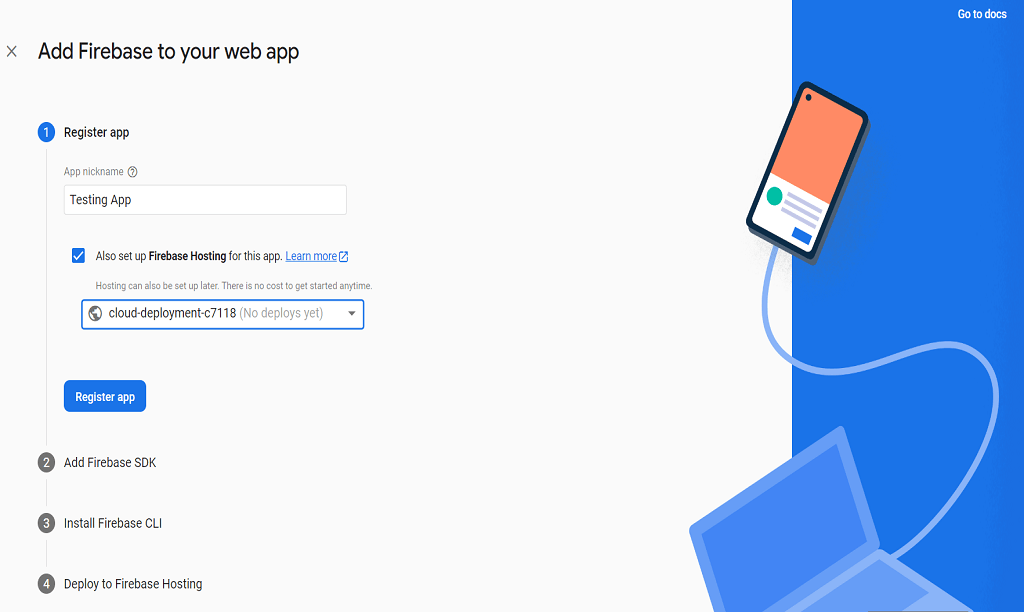
Firebase SDK
Firebase provides SDKs to support the integration of its databases with Android, web, and iOS apps in a secure manner.
These SDKs also facilitates your app’s serverless architecture through integration with Firebase databases. To do this, we recommend copying and pasting the readymade script into the <body> tag and inserting this tag into the index.html file.
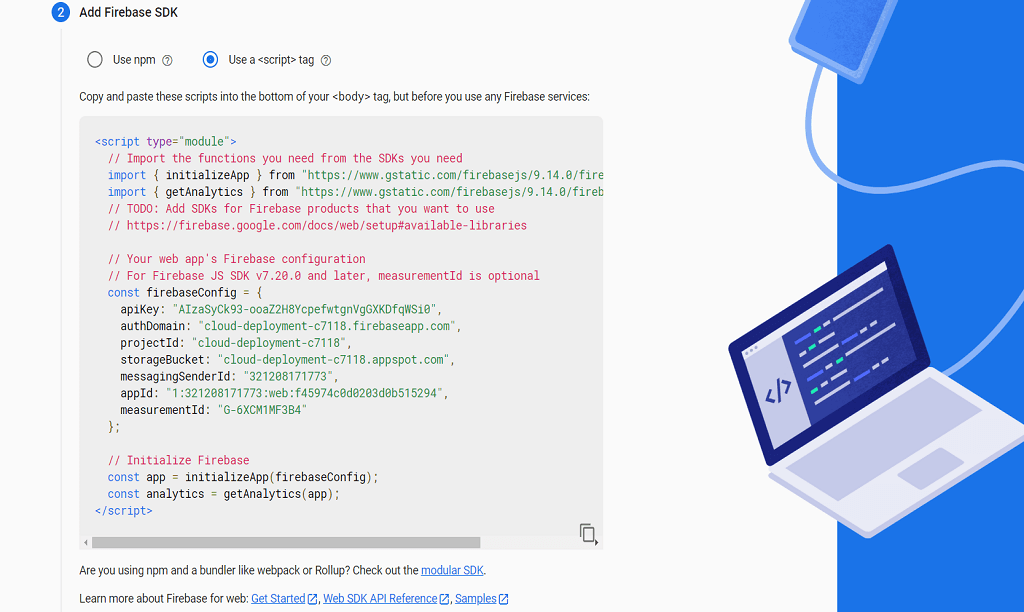
Firebase CLI and App Deployment
The Firebase CLI facilitates communication between Firebase engine and the app. Installing Firebase CLI is easy and can be done with just a single click.
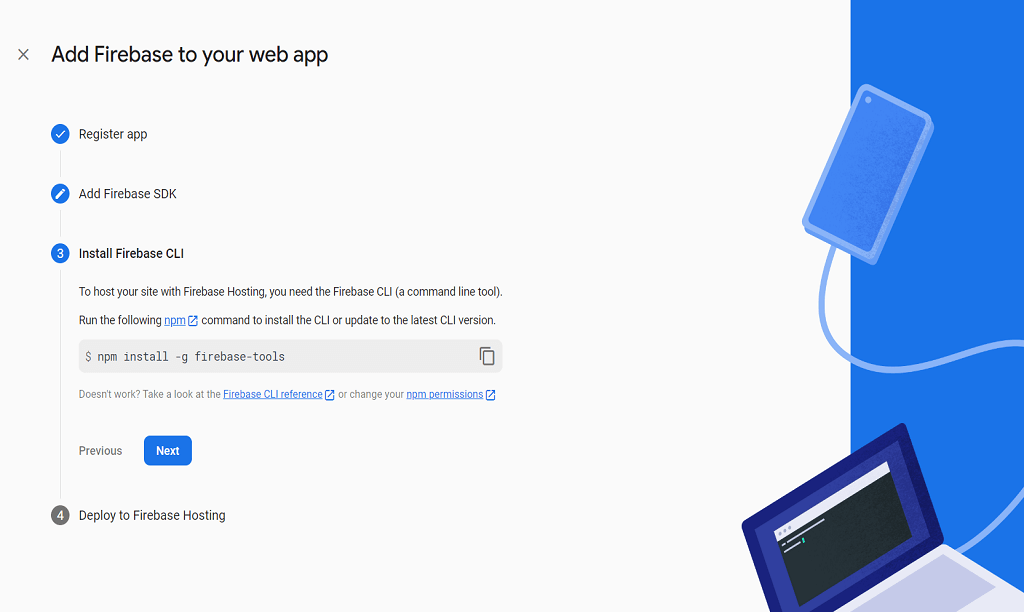
The Firebase app deployment process involves three stages:
Login to Firebase: Log in to your Firebase account
2. Firebase init: Run the command from your app’s root directory. After that use Firebase.json to configure your app settings.
3. Firebase Deploy: Put all the HTML, JavaScript, and CSS files in the public directory to deploy the Firebase app. It’s that simple.
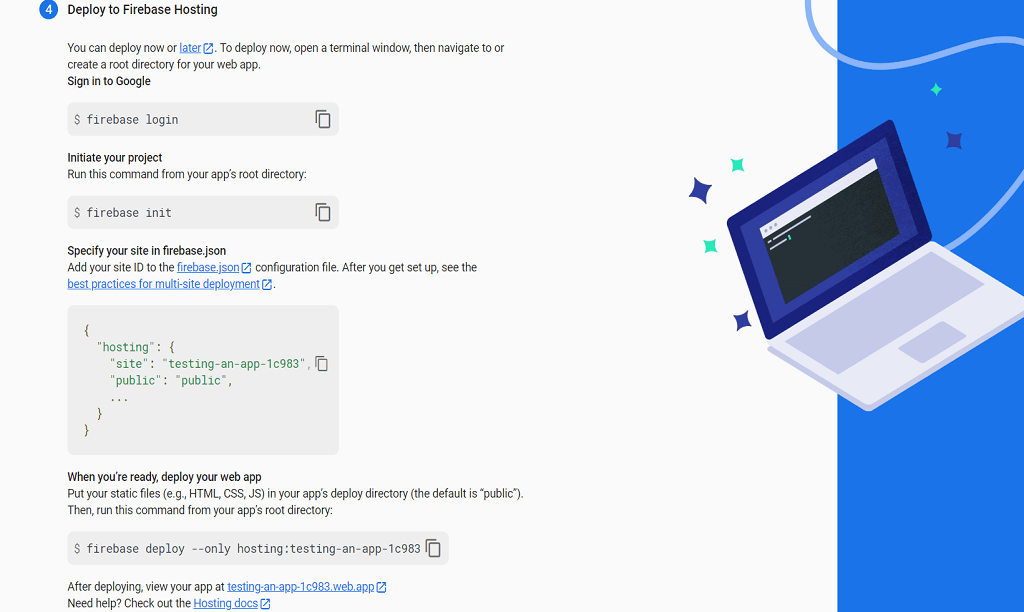
AWS
This platform is an undisputed leader among other companies providing cloud services. A 2022 Synergy Research Group report claims that AWS holds a domineering market share worth over two hundred billion dollars. AWS boasts over 200 cloud products and is well-known for its scalability and reliability.
Deploying apps on AWS begins with creating an account, which unfortunately requires providing your payment details to hold a small fee.
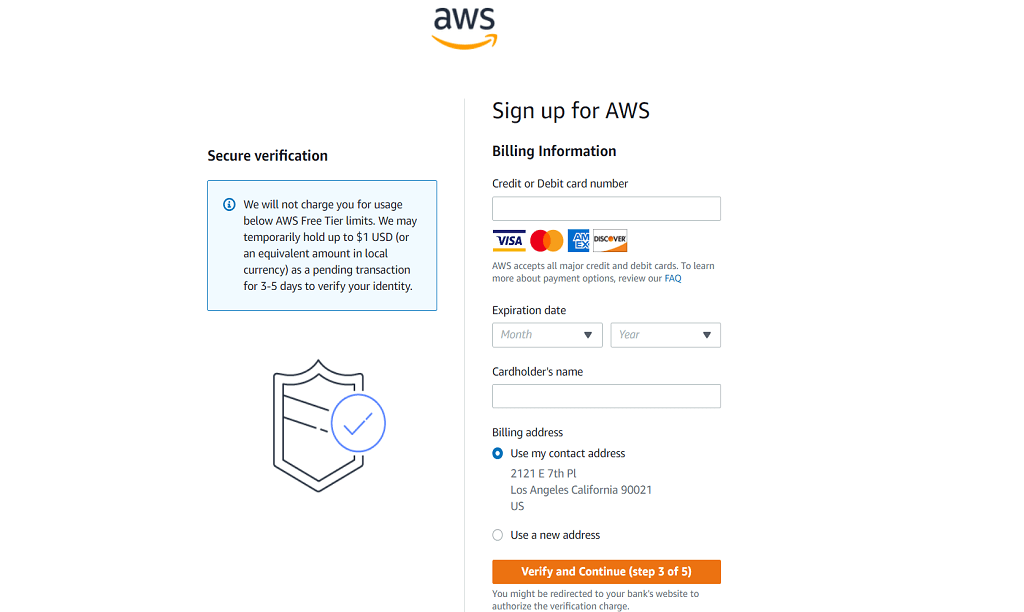
Once your account is set up, you can access the AWS Console and consider using AWS Amplify accomplish the task of app hosting or app deployment.
This product is especially useful for deploying Vue.js, React, or other JavaScript-powered applications and offers a range of features and services to help you get started.

Deploy App with AWS Amplify
AWS Amplify is an efficient cloud platform that enables developers to deploy and host applications easily. By choosing ‘AWS Amplify’ from the platform’s Console, users can access the Deliver area and start the deployment process.
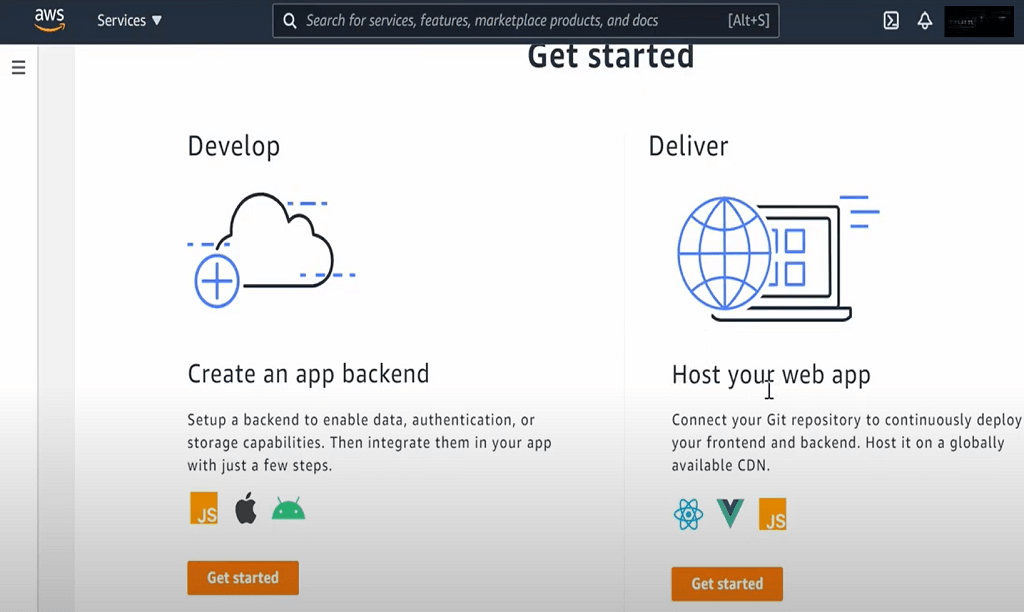
To use AWS Amplify deployment feature, developers can use AWS CodeCommit, GitLab, Bitbucket or GitHub. Authorization on GitHub is required, and then the correct branch as well as the repository can be selected.
Once this is completed, users can choose a desired environment, connect to the branch. After that the procedure for provisioning, building, deploying and verifying the application takes a few seconds.


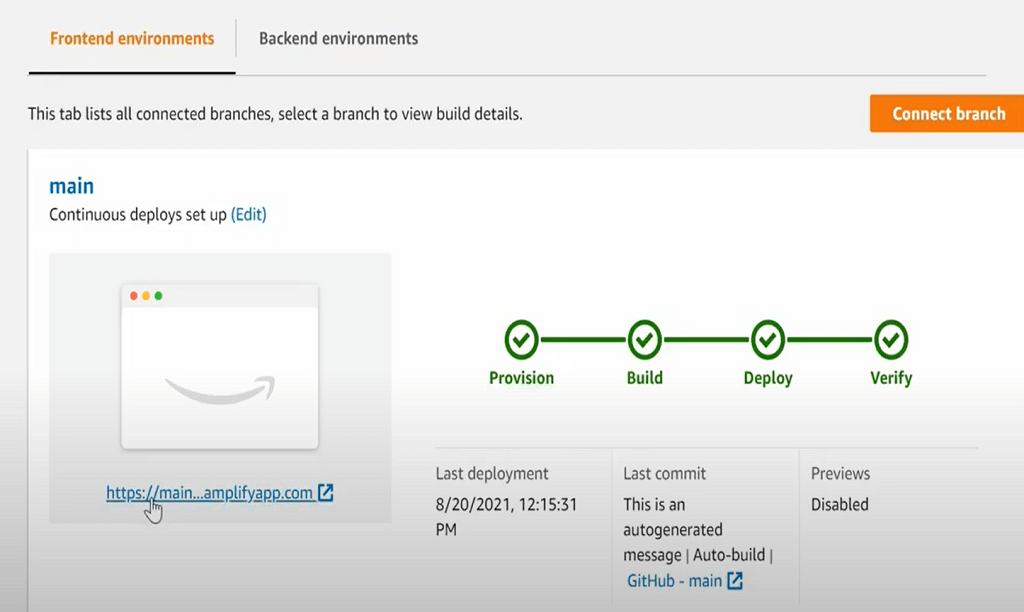
Amazon EC2 offers great features for web app deployment, while Amazon S3 can also be utilized for full-fledged cloud deployment solution.
AWS is one of the leading cloud infrastructure and service providers globally, with over 200 cloud products available. Although registration for AWS is not entirely free, it is a trusted platform with a market share of over $200 billion.
Conclusion
Cloud deployment has become a popular choice for businesses and developers to set up applications. In this article, we provide a comprehensive guide on how to deploy cloud apps through various cloud service providers (CSPs). By following this roadmap, businesses, startups and solo developers can find the best option to deploy cloud apps.
We discuss popular CSPs, including Back4App, Heroku, Firebase, and AWS, and provide step-by-step instructions on how to sign up, create an app, and deploy it in the cloud. We cover various deployment methods, such as Git, Container Registry, and CLI, as well as cloud services that are suitable for specific types of applications, such as AWS Amplify for JS, React, and Vue.js apps, and Amazon EC2 and S3 for web applications.
Whether you are a startup or an established enterprise, this guide will help you to easily and securely deploy your applications in the cloud.
Frequently Asked Questions
Overview of Cloud Deployments
The deployment of applications in the cloud is the act of installing and launching them through any cloud-based hosting models, including IaaS, BaaS, PaaS, and SaaS.
List the Advantages of Cloud Deployment
– Highly scalable
– Increases business Resilience
– Saves costs
List the Top Cloud Service Providers?
– Back4app
– Heroku
– Firebase
– AWS



